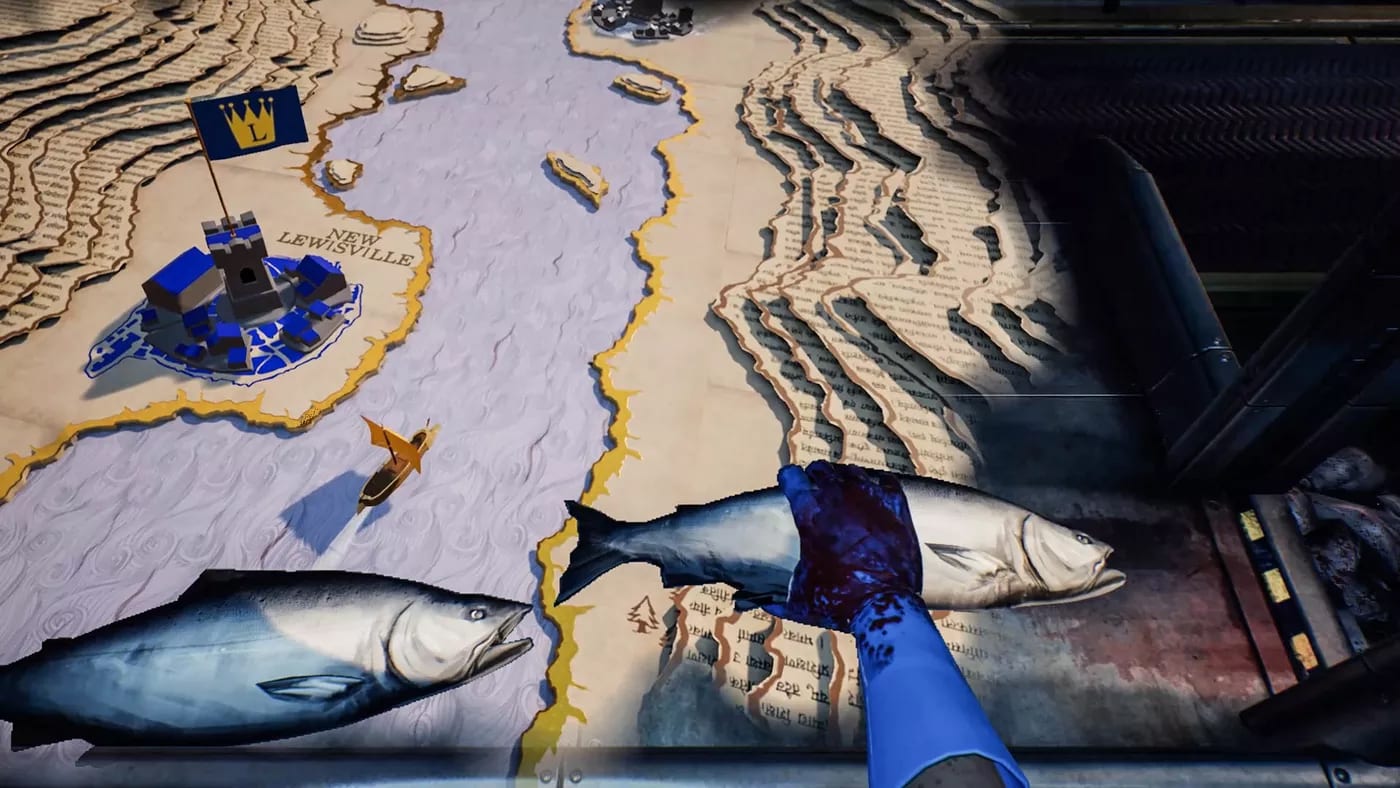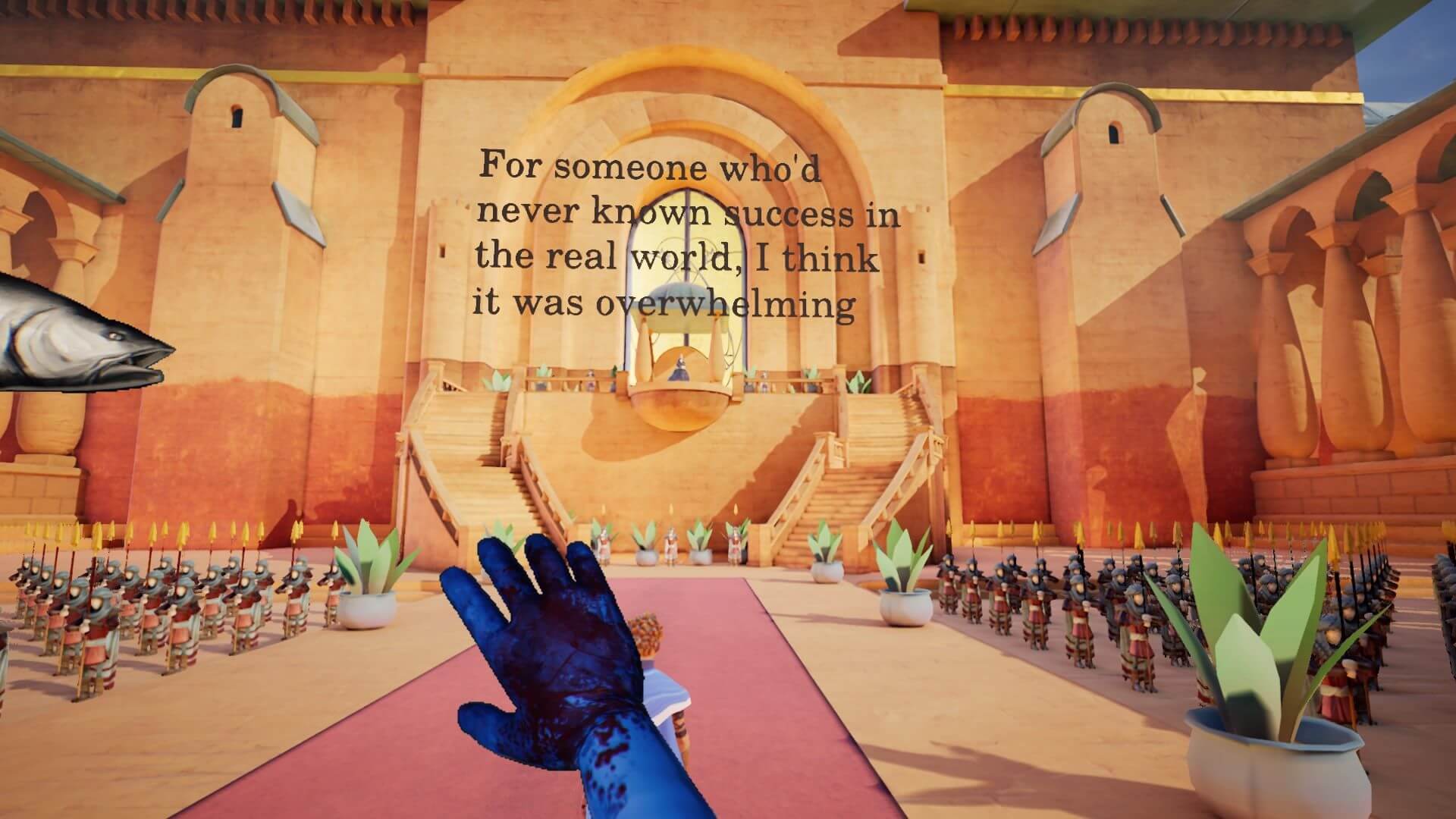What Remains of Edith Finch Is One of Gaming’s Most Beautiful Tragedies
This article contains major spoilers for What Remains of Edith Finch .
"The household was exactly like the way I remembered it. The fashio I'd been dreaming about it." These are the words verbal by the titular narrator as you first approach the grotesque house in 2017's What Remains of Edith Finch, a first-person geographic expedition game in the vein of Gone Home and Firewatch. Amidst the dense forests of the Pacific Northwest, the house grows tall from the ground and stretches taboo all told directions, a century of remodels and additions fashioning it resemble the genealogy that it held as its occupants. This place wasn't just home to several generations of the Finch kinsfolk, but besides to the tribe curse that followed them clear from when their ancestors sailed from Norway to President Washington state. A anathemise that unfortunate nigh every member of the family to an early and tragic demise.
You spend your time exploring the abode and the varied suite that belonged to for each one member of the Finch menag. Within the twisting maze of rooms, you find objects that allow you to get a short vignette of their last moments of living, from each one one bestowed in a different surreal and allegoric fashion. They all exude equal parts beauty and tragedy, but none thus much as the devastatingly unforgettable write up of Edith's sr. brother Sinclair Lewis Finch, his lin at the local fish cannery, and his road to awe.
Just extraordinary look at Lewis' abandoned way says a fortune about World Health Organization atomic number 2 was in lifespan. Pitch blackness lights, dose paraphernalia, prescription medication, and TV games stretch crossways his living space in a physical manifestation of the escape he so desperately craved. An escape from his ever-dwindling family, an escape from the Gordian burl of their supposed curse, and an escape from the stagnation of his job on the assembly line of the local fish cannery. Or, I guess a better word to use would follow dismantlement line, which is where we find ourselves in Lewis' level.

We enter Lewis' tale through a letter sent to his mother from his psychiatrist following his death. We begin direct Sinclair Lewis' eyes as he goes done the literal motions at his job. Victimization the right linear gravel, we move one fork out to a fish that enters along a conveyor belt from the left to a guillotine happening the the right way. One the fish is beheaded, we toss the torso forward and Begin the process again. The tedium transforms into brawn retentiveness as our right grows accustomed to the job. This singular action becomes our metronome for this segment, but more significantly, it became Lewis' metronome for his stallion lifespan. Grab a Pisces, chop a fish, cast out a Pisces: a three-step treat that he was competent to do with the sort out of tireless automation that drew praise from his superiors, WHO remarked that his machine-like efficiency ready-made him a model employee.
Grab a fish, chop up a fish, toss a fish.
Only patc this is where the personify of Frederick Carleton Lewis Finch resides, his judgment is elsewhere. While your right hand controls the production line, your left enters an evolving world in Clive Staples Lewis' imaginativeness. His mind wanders to a land where atomic number 2 International Relations and Security Network't fettered to the menial rhythm of his life, where he's a brave adventurer exploring a fantasy realm. It begins as a panduriform top-down adventure in a small thought bubble in the corner of the screen. Initially, it's a slightly more updated version of the classic 1979 game Run a risk for the Atari 2600. Amidst the recital of his head-shrinker's letter, you control Lewis making his way through a monochromatic maze with one hand, all patc simultaneously continuing his daily subroutine with the other.
Grab a fish, chop a fish, jactitate a fish.

The adventure in his mind slowly grows, adding color and objects and life to the world. Using a torch to light his surroundings, the fantasy suddenly evolves into an isometric perspective full of vivacious energy. The medicine of his imagination begins to drown come out the sounds of the rattling worldwide, save for the scheduled violent snap of the guillotine. Lewis parades through and through a town as the citizens line prepared to cheer his valianc. With same city conquered, he commandeers a boat and takes to the sea, setting off to explore the chartless waters.
The burble that this fancy plays knocked out in continues to grow, encroaching on your consider of the reality of the cannery. Lewis' kingdom expands as the words of the psychiatrist tell us that the fantasy deep down of his promontory began to feel more real than the life atomic number 2 lived outside of it. Helium became so enwrapped in his introduction that he even forgot to go nursing home extraordinary mean solar day. You see a brief snippet of his mother showing adequate work, the letter continuing, "Even as his mother pleaded with him, region of Lewis kept sailing on." But through all of it, his crop never ceased.
Grab a Pisces the Fishes, chop a fish, flip a fish.
The fantasy grows yet again, fetching up the entirety of the covert save for Lewis' arm and the endless stream of pink-orange. The simplistic top-down labyrinth is now a massive third-someone public brimming with color and life. Lewis enters the massive hall of a foreign queen, fully disposed to become her king. The letter states, "For someone who'd never familiar success in the real world, I consider it was resistless." To Lewis, the roles of the two worlds begin to reverse. Atomic number 2's non working in a cannery and dreaming of existence a king, only rather the exact diametrical.
The gamble morphs once again, this fourth dimension into firstly-soul. Lewis the venturer concisely leaves his shiny kingdom for a trip through and through the dull humdrum of his cannery. He walks sometime the shell of his former self, standing Eastern Samoa a prisoner over the conveyor. As he turns his spinal column on that false self and walks punt into the light, you tin still hear the three-step metronome tick.
Grab a fish, chop a Fish, thresh about a fish.

The fantasy culminates with you walking direct the rejoicing hall of your new queen. As you ascend a velvet stairway, you can already see what the future has in store for you. At the top, your pou waits with your crown in helping hand, only one final obstacle upright between you and the life you were meant to have. "There was sole one affair left to do," the letter ominously tells us atomic number 3 Lewis approaches the closure by compartment. "Bend downwards his head," are the words spoken as we do upright that, our queen crowning us at the exact moment we hear the snap of the blade as it comes crashing down. "And the rest I think you know," the shrink's sad letter concludes. "Mrs. Finch, your son was a kind man who bequeath glucinium uncomprehensible by all of us who knew him."
There's a power to the stories we tell, not necessarily because they're true, just because the act upon of informatory them itself gives them power. There's no way to tell if the family curse was real, or if the mere fact that they believed in it made information technology genuine. It didn't matter to Frederick Carleton Lewis, because past the time atomic number 2 came of age, helium had already spent so much time submerged in the idea of it that it became a part of him.
What Remains of Edith Finch is stacked of a dozen or thus tragedies of this kind, and experiencing how Carl Lewis' wanderlust morphed into its own doomed fate is genuinely heartbreaking. Furthermore, this powerful vignette comes right on the heels of the discovery of the elbow room of Edith and Lewis' other brother, Milton. The way his story dovetails with developer Hulk Sparrow's preceding game The Unfinished Swan adds a powerful level to both pieces separately, as asymptomatic as when paired.
At one point in the game, Edith delivers the following draw with a whacked resignation: "For what it's worth, I think up the people in these stories actually believed them." And creating his own story was the only way Lewis knew how to escape the tragic cycle of his life. Grab a fish, chop a fish, convulse a fish.
https://www.escapistmagazine.com/what-remains-of-edith-finch-lewis-gamings-most-beautiful-tragedies/
Source: https://www.escapistmagazine.com/what-remains-of-edith-finch-lewis-gamings-most-beautiful-tragedies/
0 Response to "What Remains of Edith Finch Is One of Gaming’s Most Beautiful Tragedies"
Post a Comment